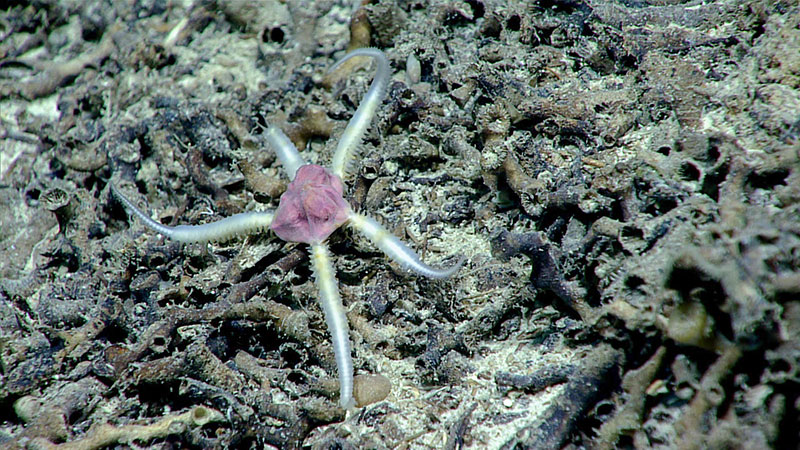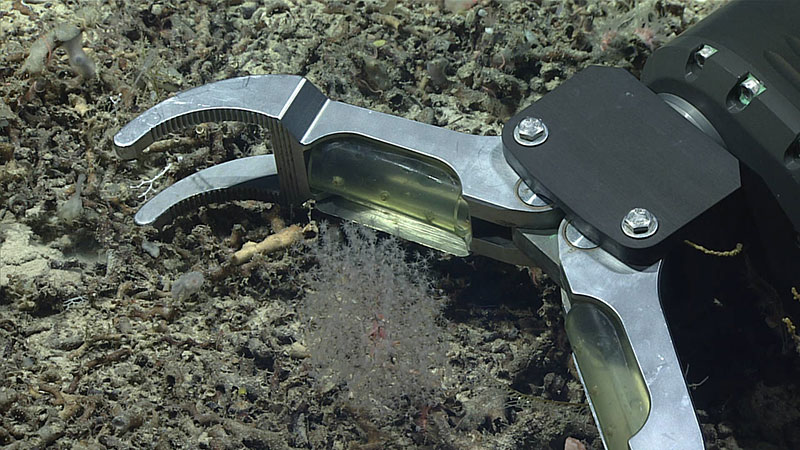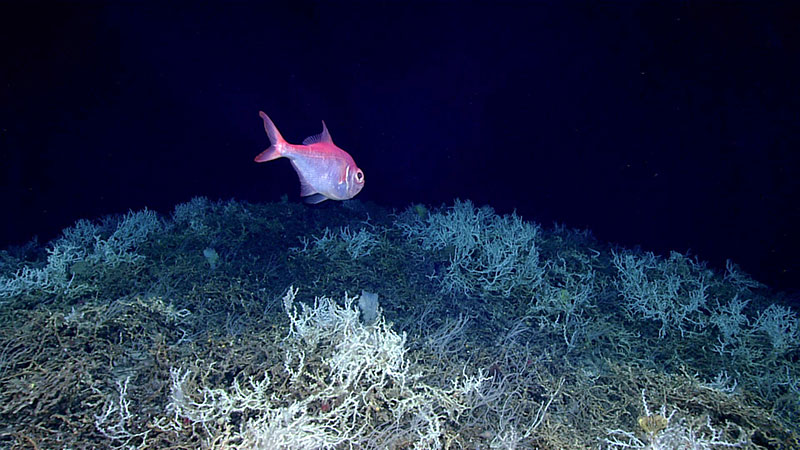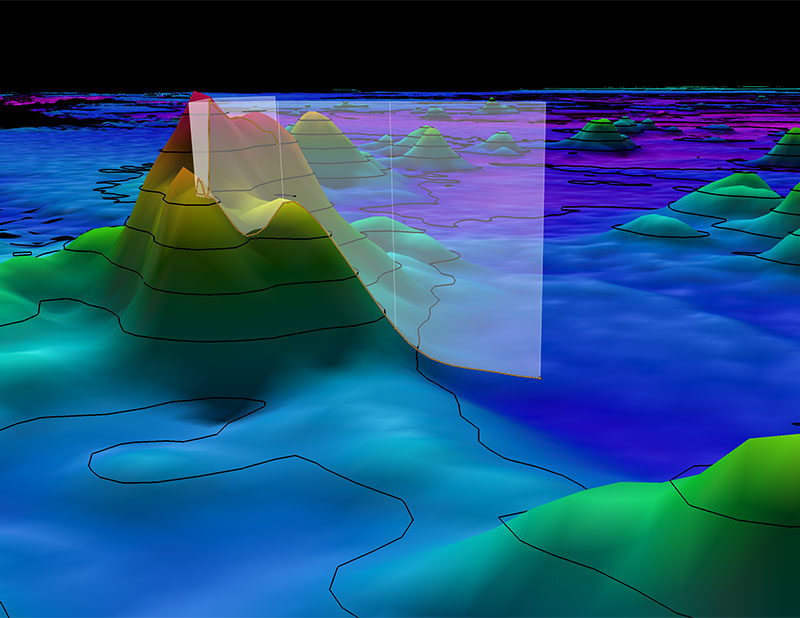
Date: June 25, 2019
Location: Lat: 30.49544767°, Lon: -78.11198427°
Dive Depth Range: 786 - 863 meters (2,579 - 2,831 feet)
Access Dive Summary and ROV Data

This unique-looking brittle star with the reddish-purple, swollen, central disk that stunned scientists on Dive 05 of the Windows to the Deep 2019 expedition. Image courtesy of the NOAA Office of Ocean Exploration and Research, Windows to the Deep 2019. Download larger version (jpg, 1.9 MB).
Our fifth dive of the Windows to the Deep 2019 expedition took place about 200 miles off the coast of Florida in the Blake Plateau region, the eastern most point that has been surveyed thus far. This site was identified as a mapping target for the first leg of this expedition based on one line of transit data over the area which held a tantalizing sneak peak of what we hoped would be cold-water coral mound. Data from leg 1 revealed not only a large amount of mound features, but also an interesting escarpment which we will investigate later this week. We targeted today’s dive site for its potential to host deep-sea coral and sponge communities. The area looked similar to Dive 04, which was conducted yesterday.

An octocoral and squat lobster associate that were collected on Dive 05 of the Windows to the Deep 2019 expedition. Remotely operated vehicle Deep Discoverer’s arm is visible as it goes to make the collection. The science team eventually decided to use the suction sampler instead of the arm, citing the delicate nature of the specimens. Image courtesy of the NOAA Office of Ocean Exploration and Research, Windows to the Deep 2019. Download larger version (jpg, 1.2 MB).

An alfonsino fish seen on a thicket of coral (Lophelia pertusa) during a dive on a cold-water coral mound in the center of the Blake Plateau (Dive 05) of Windows to the Deep 2019 expedition. Image courtesy of the NOAA Office of Ocean Exploration and Research, Windows to the Deep 2019. Download larger version (jpg, 1.4 MB).
Similar to the past few dives, the Dive 05 location was covered in a layer of coral rubble. However, the area still hosted a variety of urchins, sea stars, brittle stars, corals, sponges, worms, anemones, jellyfish, crustaceans, bryozoans, isopods, fish, and snails. The remotely operated vehicle Deep Discoverer started at the base of the mound, around 863 meters (2,831 feet) depth, where the fields of coral rubble were observed. Moving up the slope, the team stumbled across a brittle star with a reddish-purple, swollen, central disk. The science team on shore were baffled at the unique looking brittle star, and identified the species as potentially Ophio mixa. Moving up the slope further, the science team encountered an octocoral with a squat lobster inhabitant, and the team took the opportunity to use the new suction sampler to collect both specimens. As Deep Discoverer moved to the top of the mound, we discovered more Lophelia pertusa, the cold-water, stony coral that is the architect of the mounds that are found within the region. Additionally, we discovered an alfonsino (Beryx decadactylus), a commercially important fish species generally associated with these cold-water coral mounds and seamounts.
During Dive 05 of the Windows to the Deep 2019 expedition, we encountered a charismatic swimming jelly called a helmet jelly that was twisting and tumbling as it moved across remotely operated vehicle Deep Discoverer’s field of view. With a characteristic groove encircling its swimming bell, the helmet jelly is classified as a coronate scyphomedusa, with a scientific name of Periphylla periphylla. Read more about these jellies in this mission log. Video courtesy of NOAA Ocean Exploration, Windows to the Deep 2019. Download largest version (mp4, 66.2 MB).

Location of Dive 05 on June 25, 2019. Download larger version (jpg, 2.2 MB).

The remotely operated vehicle track for Dive 05, shown as an orange line with a white curtain. Scale is water depth in meters. Download larger version (jpg, 2.5 MB).